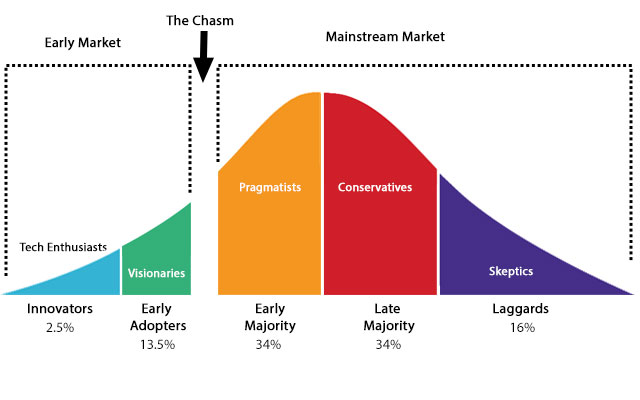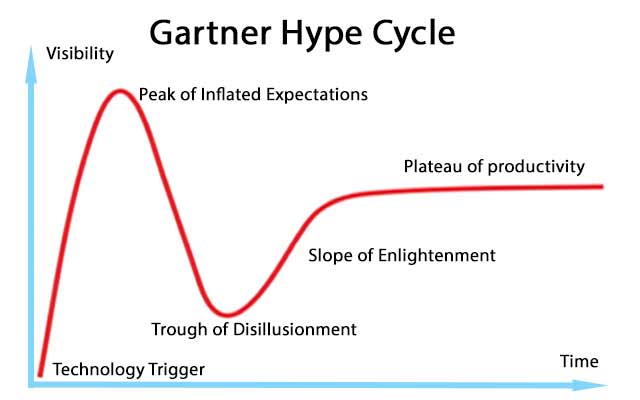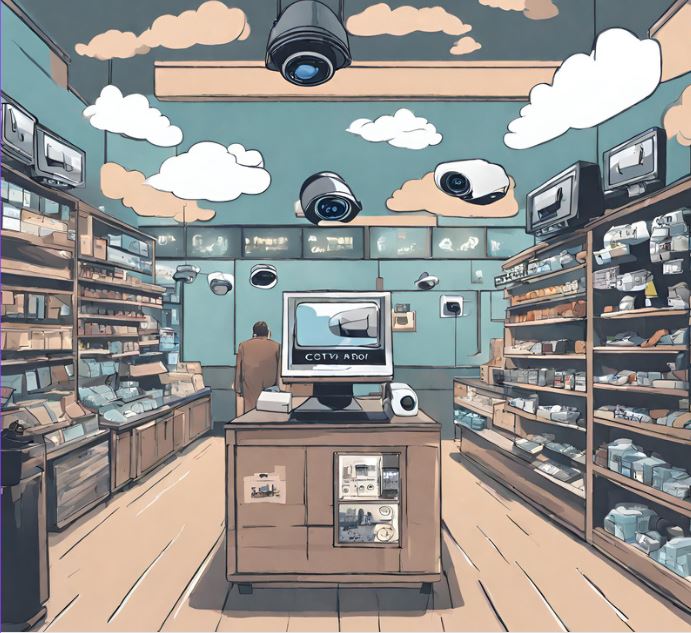In this article, Frank Crouwel, Managing Director of technology integrator NW Security Group, answers the question: ‘Why are we seeing such rapid adoption of advanced video analytics right now and what are the dangers for the wider market if we see the widespread poor configuration of these potentially powerful tools?
Over 30% of UK CCTV systems live with ‘Top 7’ Analytics Tools
A study of businesses across England with more than 50 employees and running CCTV systems in their work premises, which we conducted during this summer, found that 7 different types of video analytics were already deployed in more than 30 percent of CCTV systems out there.
The ‘Top 7’ most highly adopted video analytics in live systems today is: Facial Recognition, Behaviour or Event-based analytics, ANPR, Video Motion Detection (VMD), Object Tracking, Object Detection and Classification, Directional Detection, and OCR (Optical Character Recognition). Several other types of analytics recorded adoption levels only marginally below 30 percent.
50%+ have most common advanced video analytics tools ready to go or already in use
However, when you include security system decision-makers who knew they had certain video analytics capabilities at their disposal in their systems but had not yet switched them on; it was striking that 11 of the 14 different types of video analytics captured by our study were present in more than 50 percent of the systems runs by the 152 video security system owners we questioned. In many cases, the level of adoption of specific types of analytics was set to double just as soon as those running these systems decide to turn these capabilities on!
It’s important to recognise that most of these types of analytics must be classified as advanced video analytics. In fact, only basic VMD could perhaps be excluded from that categorisation. This means that for nearly all of these video analytics capabilities to work efficiently to reduce false alarms and deliver consistent efficiencies for CCTV system users they require some tuning and configuration by a security systems expert.
Late Majority will be turning on advanced analytics in droves
It also means that many advanced video analytics are imminently dropping into the hands of ‘late majority’ buyers, described below as ‘Conservative’ users in the below adaptation of the famous technology adoption curve which was first described in Geoffrey Moore’s seminal book ‘Crossing the Chasm’. This group is categorised by Moore as being those that tend not to adopt technology until long after it’s proved its worth in multiple successful ‘use cases’ from early adopters and early majority users. The Late Majority are also highly intolerant of technology which is hard to set up and operate. The ultimate risk is that these late majority adopters, over a third of the potential market, will turn off this advanced video analytics just as quickly as they turned it on. They are likely to do just that if these analytics tools prove ineffective in reducing false alerts, identifying threats more consistently and accurately, and delivering promised operational efficiencies rapidly.
Bear in mind, that our study also discovered that 93 percent of businesses running video analytics within their live CCTV systems right now are still finding that their systems are generating too many false alerts linked to poor installation, maintenance, or configuration and, more worryingly, that 27 percent of all system decision-makers reported an excess of false alerts being generated by their systems specifically because of incorrectly specified or configured video analytics software and you begin to understand that there is a real danger of the latest generation of advanced video analytics (being offered to the mainstream market) being unplugged.
The industry needs to do much better to ensure successful deployment of this new technology. It is not enough just to make the technology more affordably available if customers cannot unlock the potential security and operational benefits without considerable adoption pain.
It is also worth looking briefly at why advanced video analytics adoption has suddenly begun accelerating. To understand this properly we have to turn to another Mr Moore – this time Gordon Moore who is famous for this thinking around what became known as Moore’s law.
Moore’s law has made smart cameras widely available
Moore’s law is the observation that the number of transistors in a dense integrated circuit doubles about every two years. Gordon Moore, the co-founder of Fairchild Semiconductor and Intel, made his prophetic forecast which promised more and more processing capability could be packed onto smaller and smaller devices in 1975 and it’s proved to be accurate ever since.
Moore’s law has essentially done its stuff for network cameras which have been able to accommodate increasingly sophisticated and advanced video analytics ‘at the edge’ and in progressively smaller and smaller format security cameras.
It is perhaps no surprise then that video surveillance market research company Novaira Insights, in its ‘World Market for Video Surveillance Hardware and Software’ 2021 market report, found that 43 percent of all professional-grade network security cameras shipped worldwide in 2020 featured these advanced video analytics capabilities.
The market research house also predicted the percentage of new cameras shipped with advanced video analytics capabilities inside would rise to 81 per cent within the next four years – making these capabilities almost ubiquitously available to all those upgrading or extending existing video security systems by 2025.
Technology availability does not necessarily translate to successful adoption
However, let’s go back to those ‘conservatives’ who we now know will be turning on this advanced video analytics in droves over the next few years. There is a real risk of the below ‘trough of disillusionment’ propagating amongst this group if best practice in their setup and configuration is not shared rapidly.
By the same token, it presents a massive opportunity to security installers and systems integrators which are able to smooth the adoption path for advanced video analytics usage just as the late majority, the second half of the market if you like, decide to switch it on.
Demand for proactive security rising
As well as the technology market dynamics driving advanced analytics adoption, what else is going on which is likely to speed that adoption along? There is clear demand out there to improve the accuracy of CCTV monitoring and enable early, proactive identification of potential security breaches, incidents or crimes.
Human-only monitoring constraints
There is also clear recognition, based on in-field studies over the last 20 years or more, that human-only monitoring is exposed to multiple variables. Training of operatives is one clear issue so that they know what incidents to look out for and where to focus monitoring activity. Not giving operatives too many cameras to monitor is also important, as is the set-up of control rooms which can support the concentration of operatives.
Many studies, including one entitled ‘See no evil: Cognitive challenges of security surveillance and monitoring (PDF)’ , put together by the Department of Applied Psychology, Cardiff Metropolitan University working in collaboration with École de Psychologie, Université Laval, Québec in Canada, summarise the difficulties of human operatives consistently spotting incidents by monitoring live surveillance images.
It is clear that video analytics can support control room operatives by helping those running and monitoring systems to spot anticipated scenarios, whether that includes types of behavior, types of objects, or visual data logging and matching as is likely to be the case with facial recognition, ANPR or OCR analytics.
Avoiding the dangers
In summary, assuming that the market/product ‘push’ and the system owner ‘pull’ or demand for advanced video analytics is such that all the predictions for ‘late majority’ adoption of these potentially powerful tools over the next few years prove accurate; how do we ensure that advanced video analytics does not become a dirty phrase, triggering what Gartner’s Hype Cycle (above) describes rather despairingly as the ‘Trough of Disillusionment’ stemming from a potentially growing great well of discontent (which is likely to come from the user base if their adoption of the technology is not well supported)?
The answer is to go to the vendors of this analytics technology for support and/or engage an expert systems integrator who understands the most common pitfalls. We detailed the most common reasons for video analytics failure in an earlier article I wrote, so I will not repeat those here, except to summarise these 7 key considerations:
- Consider camera placement and lighting carefully
- Make sure you keep cameras clean
- Take time to configure and adjust in the early weeks in order to get good performance from analytics (analytics are never plug and play, whatever the manufacturers say)
- Don’t expect too much from each camera if you want reliable outcomes – don’t expect one camera to do three different jobs
- Never lose sight of your Operational Requirements (OR)
- Use video analytics to support your existing monitoring staff to do an even better job than they are already doing. Probe the OR gaps and put your suite of video analytics tools to work to close any of these operational gaps and vulnerabilities.
- Don’t be carried away by vendor promises: Be cognisant of the fact that the camera vendors applying this technology do not have the technology resources of Apple or Google to run extensive in-field, as well as in-lab tests. Many are ‘working in beta’ in this area – advocating video analytics tools that are not yet fully formed
Finally, there is a genuine danger of being mis-sold on the accuracy and benefits that are deliverable ‘out of the box’. For example, we’ve seen facial detection analytics software which ‘detects’ anything vaguely round-shaped in a camera’s field of view as a human head, when in some cases the analytics was spotting footballs or even the wheels of a vehicle.
Be prepared to bring in an expert if you don’t have the resources to test the claims of vendors, or the skills to configure the advanced video analytics tools before you make them live.
Enquire about Intelligent Systems




